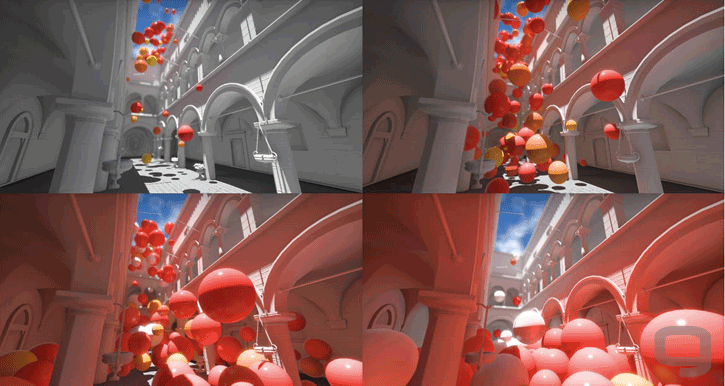Nvidia released a new developer toolkit called Nvidia's RTX Global Illumination SDK v1.0 (RTXGI), which aims to provide all the tools necessary to provide scalable lighting solutions across all DirectX Ray-Tracing compliant GPUs without prohibitive requirements.
Different Ray-Tracing characteristics can be integrated scaling from basic lighting to the best lighting that could be simulated, maintaining the optimization of resources and providing pure dynamic lighting, not pre-calculated as currently used.
“The fundamental advantage here is that it's a scalable SDK that allows low-end hardware that may not have ray tracing capabilities to produce global illumination,” Tony Tamasi, SVP of content and technology at Nvidia, says. “Then hardware that has ray tracing capability gets progressively better, meaning the updates are higher quality and more frequent.
Key Highlights of the RTXGI SDK v1.0 release include:
- Full Source Code. Providing full source code so you can easily integrate RTXGI into your tools and customize it to your specific needs.
- No Baking, No Leaks. Dramatically speed up your iteration time with real-time ray traced lighting. No more waiting for bakes. No more obsessing over light probe positioning either; no light or shadow leaking.
- Any DXR GPU. RTXGI runs on a broad range of hardware. All DXR-enabled GPUs are supported, including GeForce RTX 20 Series, GTX 1660 Series, and GTX 10 series.
- Tuned & Optimized. Easy to integrate and fast to provide results, right out of the box. Performance optimized to fit in 60Hz frame budgets.
According to Nvidia, you can have a small amount of Ray-Tracing with graphics card that does not even have dedicated hardware for it, and still get better lighting than conventional, with playable performance. Then, with more powerful hardware with dedicated hardware for RT, you can get better effects and higher performance. This scalability will make it possible to use the technology in all ranges, and not have to worry about which graphics will be used by the end user. It will be compatible with any graphics that supports DirectX Ray-Tracing, so it is not exclusive to Nvidia. It can also be used in the future on Navi 2X and Intel Xe, which makes this SDK even more interesting. The Khronos Group announced official Vulkan RT ray tracing earlier this month, and we can expect to hear more from game devs making the most of that API later in the year. As for hardware, AMD will bring its own spin on the ray tracing formula with RDNA 2.0 in discrete Navi 2X graphics cards, the Xbox Series X, and the PlayStation 5 in the Winter.
You can learn more about the SDK and request access to it on the official Nvidia site by clicking here.


